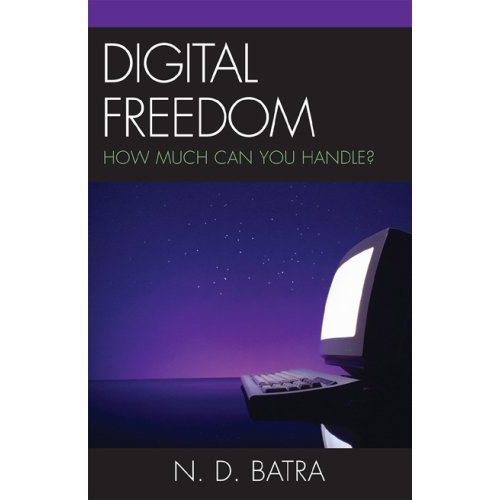Growth through synergy
by ND Batra
From The Statesman
Recently when a friend in Mexico e-mailed to me: “I would Skype you at 10 a.m.,” I was not sure whether like “google” a new verb was quietly slipping into the American tongue, but I surely felt synergy rising due to the convergence of television, computer and telephone. Synergy characterises the ethos of the age of the Internet. It is also a most important buzzword today.
Corporations seek synergy and self-renewal through mergers, acquisitions and technological convergence, as the Tata Group is trying to do with the Anglo-Dutch steelmaker, Corus PLC. Synergy occurs when discrete businesses cooperate and combine creatively so that “the total effect,” according to Webster’s, “is greater than the sum of the effects taken independently.” Corporations would pay anything to have a business model for creating synergy, but business schools do not teach their students how to develop synergy. Necessity is the mother of synergy. Synergy is not limited to the business world. It is equally important in nature.
Ants, for example, build an unenviable synergetic environment for survival. They transcend their smallness through synergy. Can a small country like Bangladesh transcend its poverty by building synergetic environment with its neighbours? South Korea and Taiwan are examples of countries that have achieved prosperity through synergetic relationship with the USA and Japan. History of technology bears ample evidence that major leaps in technology occur only through synergy. Samuel Morse’s telegraph, for example, combined with Hertz’ electromagnetic spectrum theory to give birth to Marconi’s wireless telegraphy ~ radio; and subsequently to radio with pictures ~ television.
At every step of technological evolution, there was synergism created by combining two or more discrete concepts or technologies. Now you see the same thing happening to traditional television, as the TV set converges with computer. The remote obeys your commands, more like a magic wand, while you lounge on your sofa with a bottle of beer, munching peanuts, watching soccer on television or video clips on YouTube (recently acquired by Google for another upsurge of business synergy). A passive instrument of entertainment is suddenly turning into an interactive tool, making you put aside your beer so that you can seek and search whatever you want. Instead of a couch potato consumer, you become an active seeker. It is a market-driven synergy created by the coupling of computer technology with television.
The hype of webbed-television is that it allows you several features simultaneously, so you could watch television and surf the Web at the same time. Watch “ Jeopardy” and participate in the game show as well. Watch cricket, chat with a friend, send e-mail, and read the latest news about sports drug scandals on the same screen. Most of the newspapers in the USA, as it is happening in India too, seek synergy with competitive media. The BBC, for example, is a marvelous example of synergy being created when broadcasting weds the Internet. The BBC had no other choice for survival in the global market except through convergence with the Internet. The NBC and Microsoft combined to create MSNBC.Com, which created an information-rich multimedia environment. Every major television network anchorperson urges the viewers during the evening broadcasts to go to its website for in-depth reports and live chats with correspondents. So do The New York Times, The Washington Post and The Wall Street Journal, which are being transformed into multimedia delivery systems. Content remains the king, but the king needs a multi-media kingdom.
Not long ago in the global race for synergy, Rupert Murdoch, whose satellite television reaches more than 100 million homes in 60 countries, realised that there’s no future without the Internet. He has been linking his satellite empire with the Internet to create an alternative delivery as well as a two-way interactive communication system. Acquisition of MySpace by Murdoch’s controlled News Corporation was a wise step in adding to its multimedia platform. It is important to understand that mere clubbing of businesses to create an overwhelming market power does not necessarily mean synergy, as the failure of America Online-Time Warner shows. Sometimes those who seek synergy need a vision. Sometimes synergy just happens. Synergy is not formulaic. It involves risk. What does this mean for a vast nation like India? Think of India as a nation of 200 million families, with an average family of five members.
As incomes rise, the first luxury item a family desires to buy is a high definition digital television set in order to enjoy their favourite pastime, sports and Bollywood. But as television households steadily increase in India, television would create the same problems as in the USA: commercial-driven programmes full of violence and sex, saturating the airwaves and cables, resulting in the coarsening of Indian culture. India could do better. If the national leadership decides that all television sets manufactured or imported must be Web-enabled, you have an Indian television household owning a computer as well, probably the only computer the family would have for sometime to come. If you add to the Web-TV Indians’ growing hunger for cell phones, you have the beginning of a great technological revolution in India.
The marketplace and the ingenuity of India’s world famous programmers have begun to create software in most Indian languages. This is the kind of information revolution the rural India has been waiting for, which can be further quickened if people become aware of the possibility of free telephone service provided by web-calling companies like Skype. Yes, you can Skype as long as you want and it is free, as my friend said.
Wednesday, October 25, 2006
Corporations seeking synergy
at Wednesday, October 25, 2006 Posted by Narain D. Batra
Topics
Globalization
![]()
Subscribe to:
Post Comments (Atom)

No comments:
Post a Comment